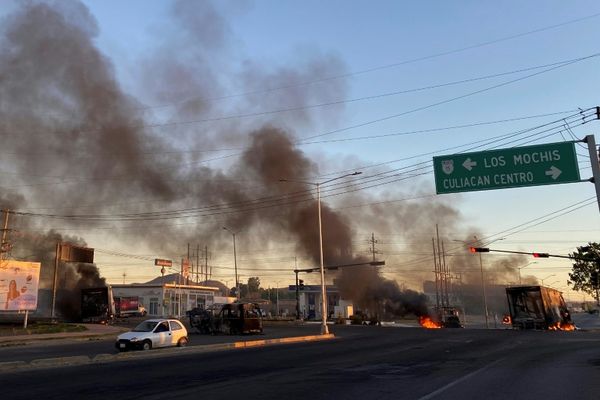WASHINGTON _ The Trump administration's long-awaited decision on whether to allow seismic testing for oil and gas beneath the Atlantic Ocean is causing heartburn for the energy industry, which eagerly awaits the fulfillment of President Donald Trump's push to allow offshore drilling in U.S. coastal waters.
Five seismic survey companies want federal permission to shoot loud, pressurized air blasts into the ocean every 10 to 12 seconds around-the-clock for months at a time over 330,000 square miles of ocean from Florida to the Delaware bay, in search of fossil fuel deposits beneath the ocean floor.
If approved, the activity would reverse an Obama-era denial of testing permits in the Atlantic Ocean and represent a major advance of Trump's "America-First Offshore Energy Strategy."
After the public-comment period ended in July 2017, many stakeholders expected the National Oceanic and Atmospheric Administration to quickly approve the "incidental harassment authorizations" needed to move the permit applications forward.
But more than 10 months later, NOAA, one of two federal agencies that will decide the matter, still hasn't approved the authorizations. The IHA would allow the seismic testing to harass or injure small numbers of marine mammals, which would otherwise be prohibited under the Marine Mammal Protection Act.
Scientists fear long-term exposure to air-blast noise could cause hearing loss and impair breeding, feeding, foraging and communication activity among dolphins, endangered whales, other marine mammals and sea turtles.
While the Marine Mammal Protection Act sets a 120-day statutory review period to decide IHA applications, some require more analysis, consultation and resources that can exceed the 4-month time period. From 2011 through 2016, the average processing time for IHA applications was 7.5 months, according to written Senate testimony from Chris Oliver, assistant administrator for fisheries at NOAA.
But after executive orders from Trump called for reducing regulatory burden, NOAA committed to cutting IHA processing times.
Since implementing new streamlining measures, like waiving legal reviews for "low impact/low controversy actions not expected to be at risk of litigation," the average processing time overall fell to 6.6 months for IHAs issued from December 2016 to November 2017, Oliver's written testimony said.
The authorizations for the Atlantic, however, are proving more of a challenge.
"We're in the process of evaluating over 117,000 comments that we received on that, many of them of a highly technical, legal, policy nature. So that process has taken a little bit longer than we expect. But we expect within the next few weeks to have made a decision on those authorizations," Oliver told a Senate panel on April 25.
One month later, the energy industry is still waiting. And it is openly chiding the Trump administration over the slow process.
In a recent blog post, Nikki Martin, president of the International Association of Geophysical Contractors and Randall Luthi, president of the National Ocean Industries Association, said the permitting "delay is a complete bureaucratic breakdown by federal agencies in what should be an otherwise straightforward process. "Approve or deny is simple and clear."
If the authorizations are granted, the Bureau of Ocean Energy Management would then have to complete an environmental study before they decide whether to approve the final testing permits. There is no timeline for the environmental study.
While some lawmakers and business leaders have raised concerns about the economic effect that seismic testing and offshore drilling could have on Atlantic Coast toursim and fishing, the energy industry has largely cheered President Trump's push to expand offshore drilling.
In January, the Interior Department announced plans to hold 47 offshore oil and gas lease sales from 2019 to 2024. That includes 19 off the coast of Alaska, seven off the coast of California, 12 in the Gulf of Mexico and nine in the Atlantic Ocean, where there have been no sales since 1983 and there are no existing leases.
Seismic testing became a moot issue after President Barack Obama removed the Atlantic Ocean from the nation's five-year program for oil and gas development in March 2016. Later that year, Obama also barred drilling in environmentally sensitive areas of the Atlantic from Virginia to Maine. Then, in one of its final acts, the Obama administration in January 2017 denied all pending Atlantic Ocean testing permits.
But Trump signed an executive order in April 2017 that would reverse these policies. In addition to opening up millions of acres of coastal waters for oil and gas leasing, Trump also called for streamlining the application process for seismic testing permits.
A December 2017 GAO report found that National Marine Fisheries Service, a division of NOAA, couldn't accurately provide the dates when they determined IHA applications were "adequate and complete" because the agency doesn't specify how or when staff should record this data.
The agency is currently working on that new guidance, according to Oliver's testimony. But the regulatory delays are taking a toll.
"Considering that the Marine Mammal Protection Act, or MMPA, requires agencies to issue decisions within 120 days after deeming IHA applications complete, this delay is a shocking policy failure," Martin and Luthi's blog post said.
Luthi, Martin and representatives of other industry groups, like the American Petroleum Institute and the International Association of Drilling Contractors, support passage of the Streamlining Environmental Approvals Act (HR 3133), sponsored by Rep. Mike Johnson, R-La.
The legislation would amend the Marine Mammal Protection Act and deem permit applications dealing with offshore oil and gas exploration to be "approved" if the processing time exceeded 120 days.
The bill, which was assailed by environmental groups for weakening protections for marine mammals, was passed by the House Committee on Natural Resources in January. But it hasn't been voted on by the full House where Democrats and some coastal state Republicans oppose seismic testing as a prelude to offshore drilling.
In an e-mail statement, Oceana, an international ocean conservation group, said scrapping the "small numbers" requirement in the Marine Mammals Protection Act would "remove one of the precautionary standards that Congress recognized is necessary to prevent the extinction" of marine mammals.
"We cannot trade away protections for our treasured marine life just because the oil and gas industry sometimes finds them inconvenient," wrote Diane Hoskins, Oceana's campaign director.
In his testimony, Oliver said the NOAA is considering other ideas to further streamline the permitting process.
These include increasing the maximum time period for IHAs beyond the current one-year limit and removing the requirement that only "small numbers" of marine mammals can be harassed or injured under an IHA. The agency is also considering removing the requirement that IHAs apply only in a "specified geographical region."
"There may be circumstances where the impacts of an activity on marine mammals is similar across multiple regions," Oliver's written testimony said.
In an e-mail statement, Dustin Van Liew, vice president of regulatory and governmental affairs at the IAGC , said his organization supports Oliver's "reasonable and practical" proposals.
"Clearly, (the NOAA) also see a broken process in need of clarity to efficiently provide decisions on proposed offshore activities," Van Liew's statement said.
But there's still a "critical need" for additional legislation, Van Liew added, "to ensure agency adherence to the statutory timeline, providing projects and surveys certainty, as was intended by the MMPA."







